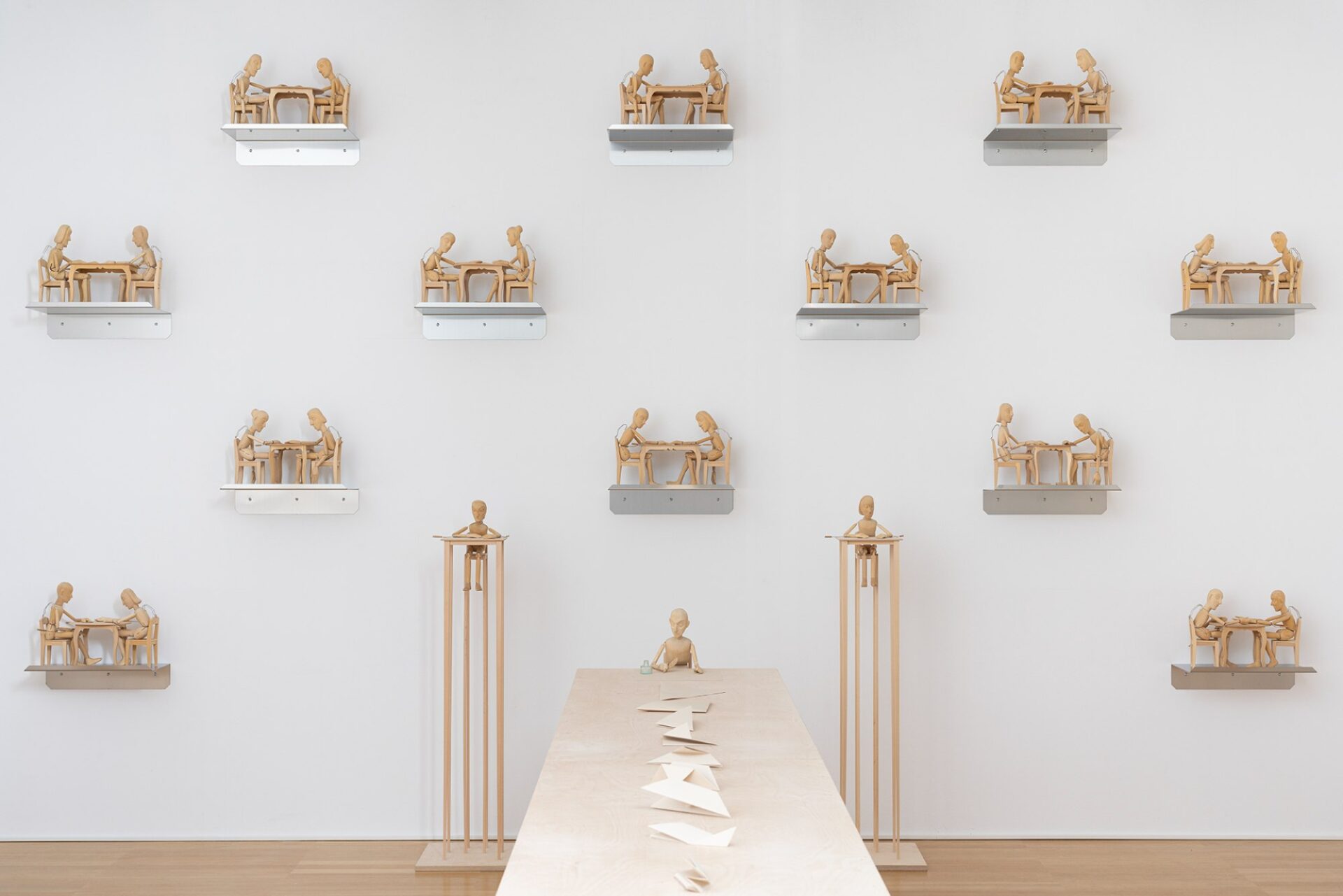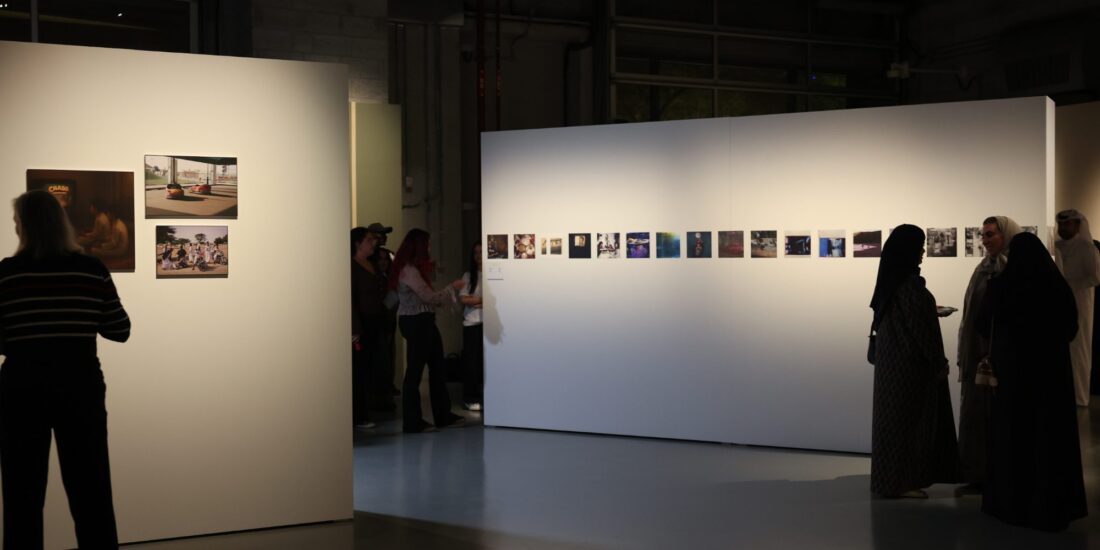Ljubljana Biennale Invites the World to Dream a New Democracy
In 2025, the Ljubljana Biennale of Graphic Arts in Slovenia marks a significant milestone with its 70th anniversary, accompanied by an edition that dares to reimagine democracy, freedom, and community through the lens of art.
Titled “The Oracle: On Fantasy and Freedom”, the 36th edition of the Ljubljana Biennale on show from 6 June to 12 October 2025, transforms the Slovenian capital into an oracular space where art becomes a site of collective reflection and storytelling.

Chus Martínez. Photo: Gina Folly
Curated by the celebrated curator, researcher, and lecturer Chus Martínez, the Biennale emerges as an exhibition that creates a space for philosophical propositions. Drawing from the ancient meaning of the oracle as a place to encounter the future, Martínez invites the public to think of biennials as modern-day oracular shrines, spaces where we consult art to regenerate expression and solidarity in uncertain times.
A 70-Year Legacy, Renewed
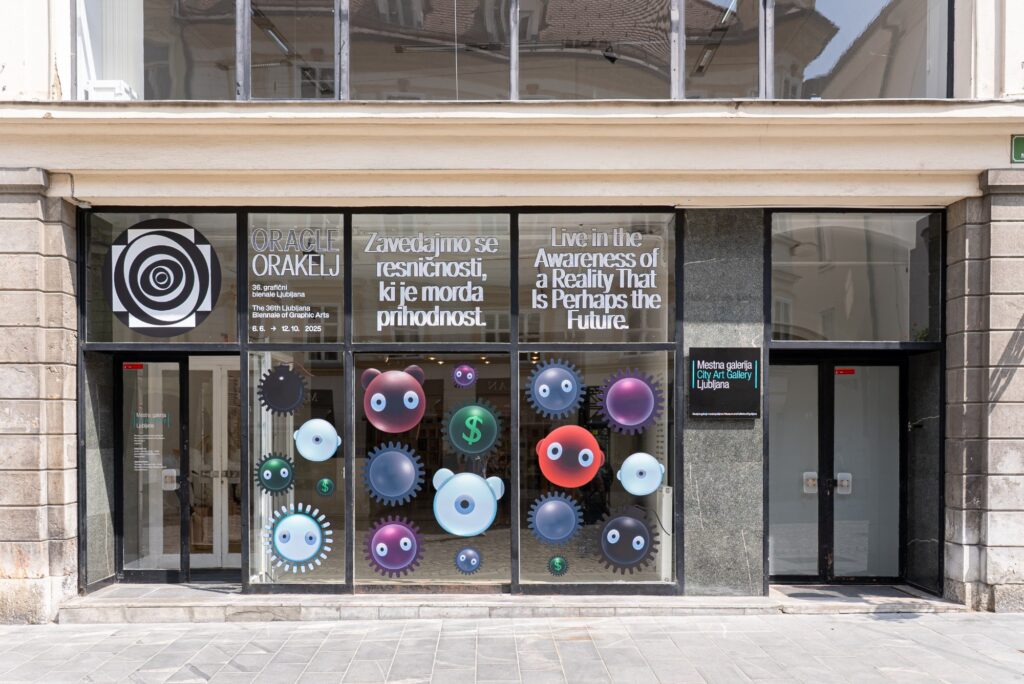
The 36th Ljubljana Biennale of Graphic Arts, City Art Gallery Ljubljana with a detail from Ingo Niermann and Mayte Gómez Molina, Hieroglyphs of the Monadic Age, 2025. Photo: Gregor Gobec. MGLC Archive.
Founded in 1955, the Ljubljana Biennale is one of the oldest of its kind in the world. Over the decades, it has exhibited works by over 9,000 artists from 122 countries, evolving from a platform for national selections to a dynamic, curated space for critical reflection and new commissions. Since adopting a curated format in 2001, the Biennale has commissioned 245 new works, involved 30 curators, and activated 53 exhibition venues, establishing itself as a hub for international dialogue in graphic and contemporary arts.
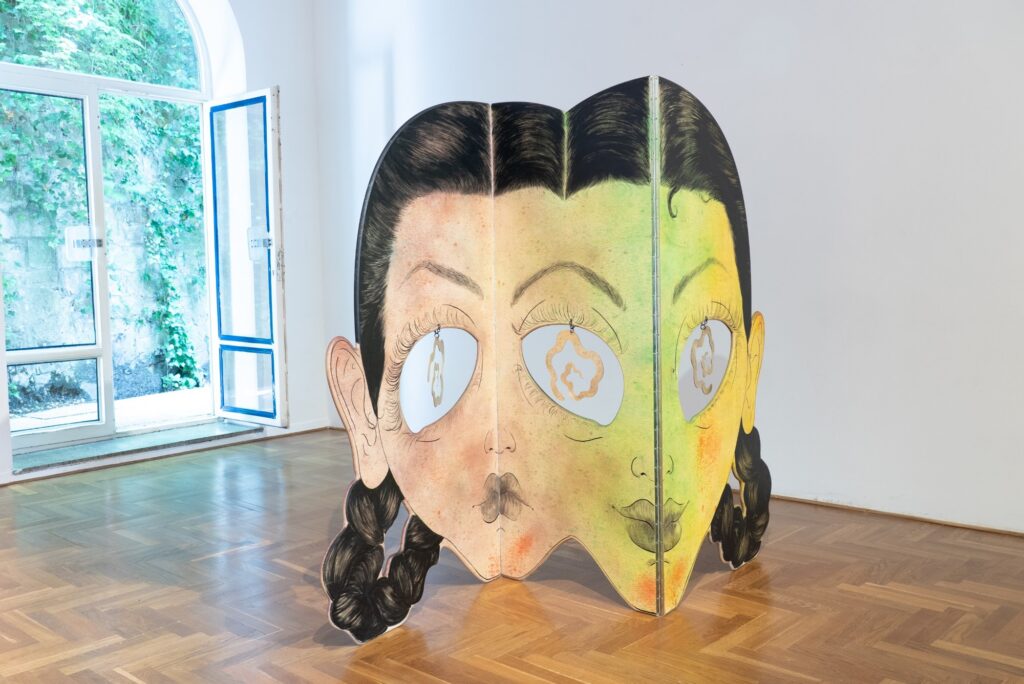
The 36th Ljubljana Biennale of Graphic Arts, City Art Gallery Ljubljana, Saelia Aparicio, In the Blink of Collapse, 2025. Photo: Gregor Gobec. MGLC Archive.
The 2025 edition celebrates this legacy while renewing its focus on local engagement. Rather than catering solely to the global art circuit, it foregrounds the Biennale’s role as a community fireplace, an intimate and intergenerational gathering space to share stories and reclaim art for a public good.
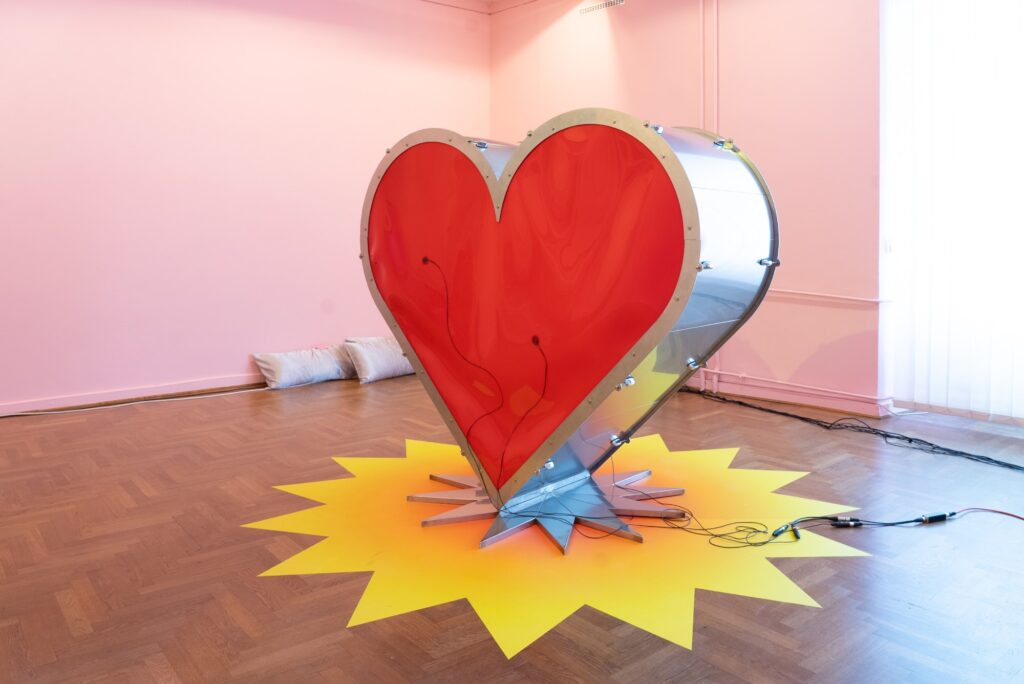
The 36th Ljubljana Biennale of Graphic Arts, City Art Gallery Ljubljana, Nicole L’Huillier, Rehearsal Room, 2025. Photo: Gregor Gobec. MGLC Archive.
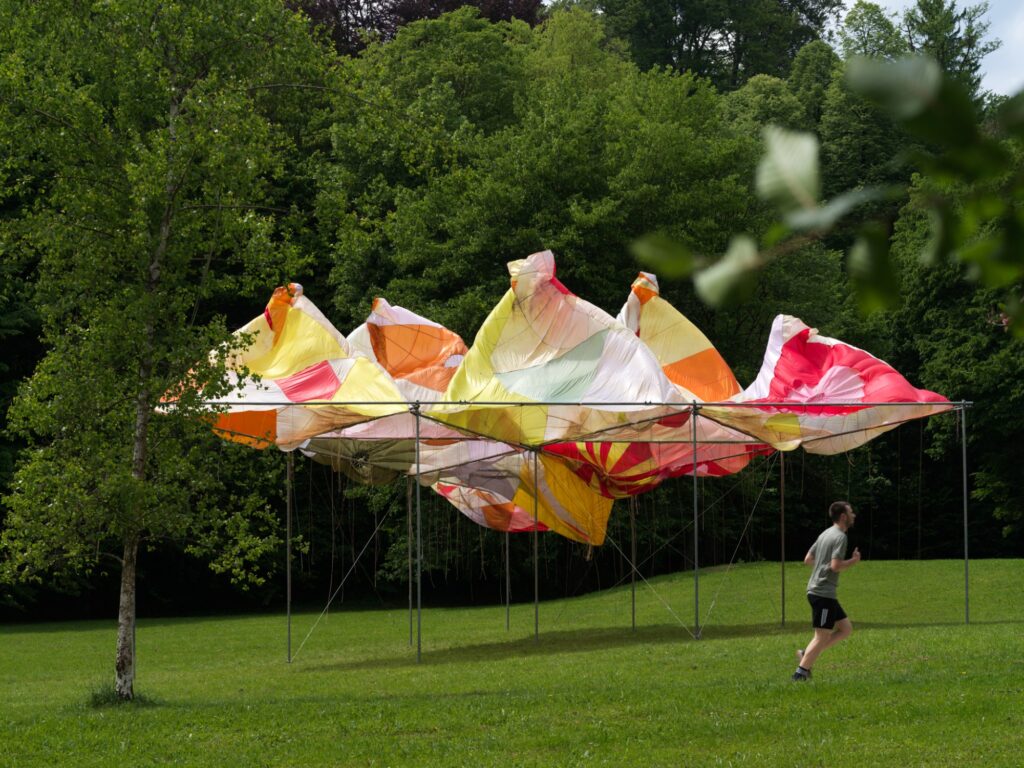
The 36th Ljubljana Biennale of Graphic Arts, MGLC Plečnik Auditorium, Kathrin Siegrist, A Shade We Share I, 2025. Photo: Jaka Babnik. MGLC Archive.
The Oracle: A Space to Dream Better
At the heart of The Oracle is the belief that art can be a space for dreaming, for a purposeful imagination. The exhibition questions how we might regenerate democracy through fantasy, wish-making, and the shared dreaming of a better world.
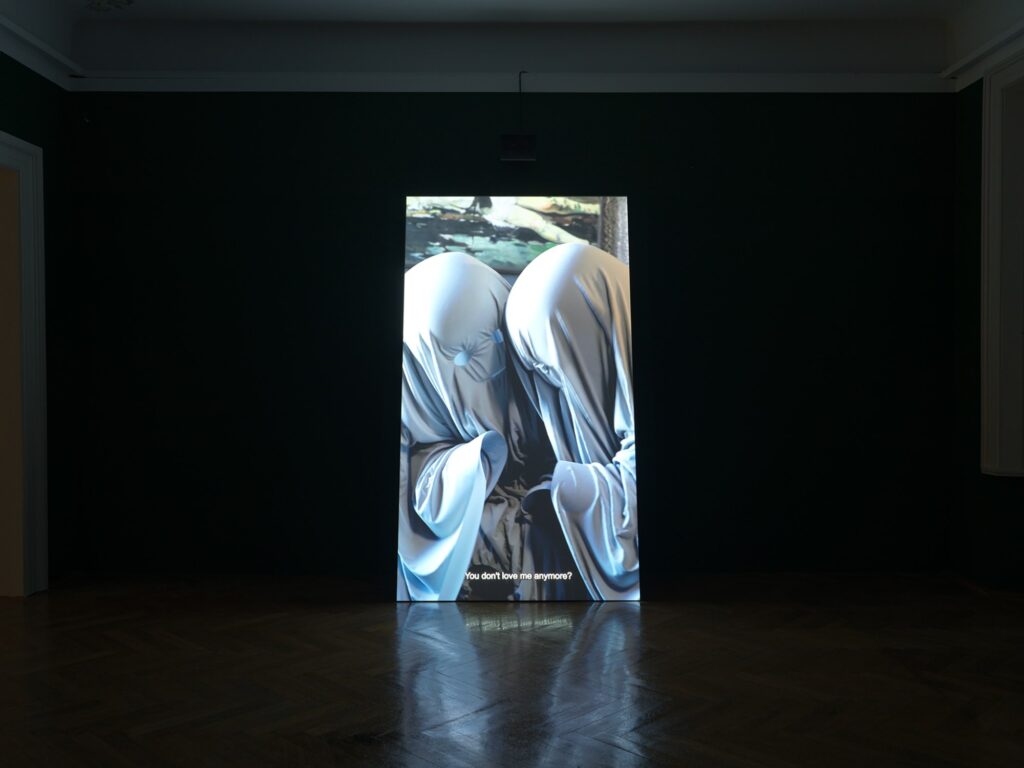
The 36th Ljubljana Biennale of Graphic Arts, MGLC Grad Tivoli, Bardo Loops, 2024. Photo: Jaka Babnik. MGLC Archive.
As Martínez notes, “Regaining motivation and a sense of self-fulfilment are nourishing elements for a renaissance of orality and meaningful communication. Democracy depends on trusting each other’s experiences and on finding paths to slowly recover from these times of radical greed.”
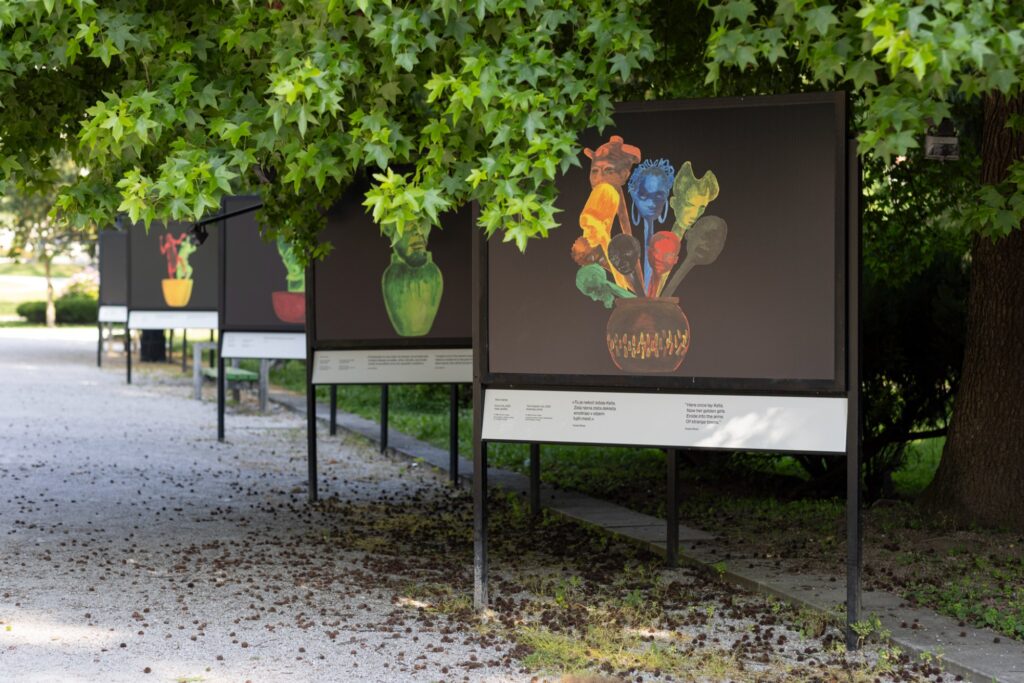
The 36th Ljubljana Biennale of Graphic Arts, Jakopič Promenade, Sinzo Aanza, The Irregular Line, 2025. Photo: Jaka Babnik. MGLC Archive.
This philosophical inquiry unfolds across multiple venues throughout Ljubljana, including the International Centre of Graphic Arts (MGLC), set within the historic buildings of Grad Tivoli and Švicarija in Tivoli Park, along with site-specific outdoor installations, the Museum of Modern Art (Moderna galerija), and the City Art Gallery Ljubljana (Mestna galerija Ljubljana). All artworks, except two, are new commissions premiering at the Biennale.
A Puppet at the Centre of the Oracle
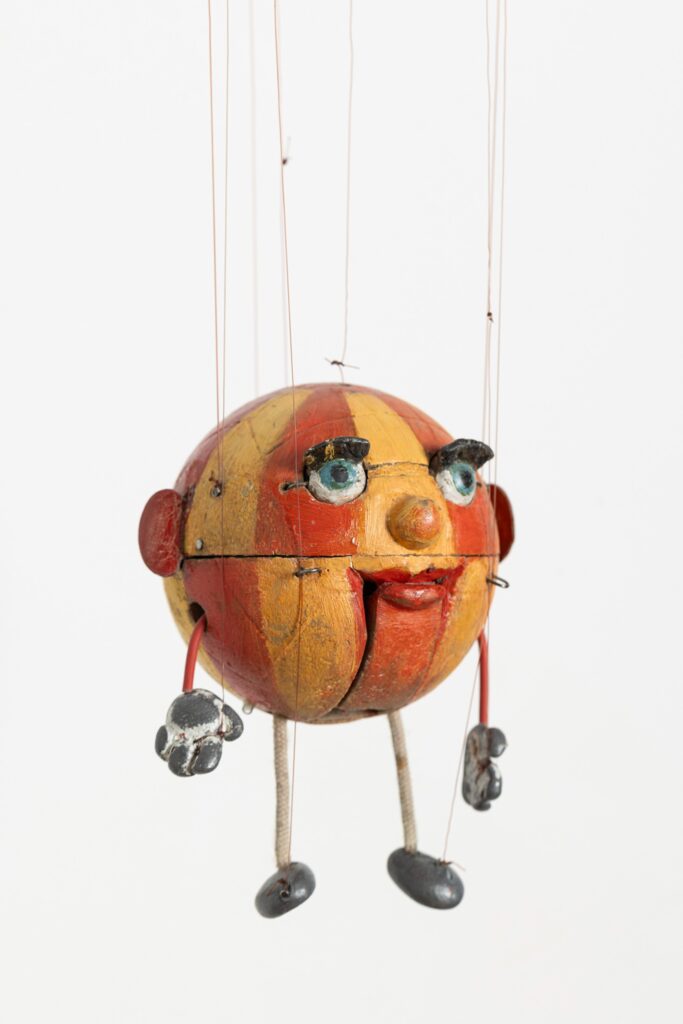
The 36th Ljubljana Biennale of Graphic Arts, Museum of Modern Art (MG+), Ajša Pengov, Žogica Marogica (Speckles the Ball), 1951. Photo: Jaka Babnik. MGLC Archive.
A unique emblem of this edition is Žogica Marogica (The Speckled Ball), a beloved Slovenian puppet created in 1951 by Ajša Pengov for a play written by Jan Malík. For Martínez, Žogica symbolises the intersection of tradition, political education, and the autonomous spirit of art. The puppet becomes a metaphor for the tension between control and autonomy, a theme that resonates with contemporary anxieties around technology, AI, and power.

The 36th Ljubljana Biennale of Graphic Arts, MGLC Grad Tivoli, Silvan Omerzu, Mr Captain, 2025. Photo: Jaka Babnik. MGLC Archive
Caption: The 36th Ljubljana Biennale of Graphic Arts, MGLC Grad Tivoli, Silvan Omerzu, Mr Captain, 2025. Photo: Jaka Babnik. MGLC Archive.
“In creating puppets,” Martínez reflects, “Ajša Pengov wondered: Should puppets be operated by hands or strings? Should they be an extension of our body or become independent?” This eternal question of control speaks to the very heart of democracy and artistic freedom—themes that The Oracle examines through layered visual, philosophical, and performative gestures.
Participating Artists and Voices
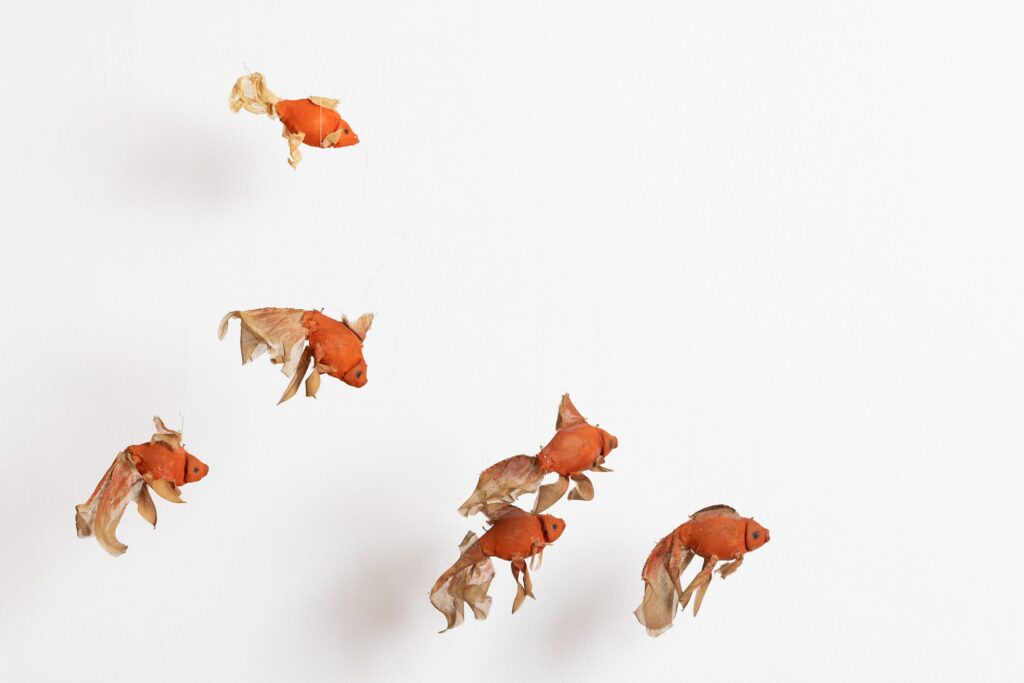
The 36th Ljubljana Biennale of Graphic Arts, Museum of Modern Art (MG+), Ajša Pengov, Puppets from Zlata Ribica (The Golden Fish), 1953. Photo: Jaka Babnik. MGLC Archive.
The Biennale features a diverse roster of artists and thinkers whose practices span visual art, philosophy, anthropology, music, performance, and critical theory. Participating artists include Sinzo Aanza, Noor Abed, Gabriel Abrantes, Saelia Aparicio, Maria Arnal, Canan, Gabi Dao, Manca G. Renko, Grupa Ee, Miles Howard-Wilks, Joan Jonas, Jane Jin Kaisen, Ema Kugler, Nicole L’Huillier, Svetlana Makarovič, Yarema Malashchuk and Roman Khimei, Manuela Morales Délano, Eduardo Navarro, Ingo Niermann and Mayte Gómez Molina, Silvan Omerzu, Ajša Pengov, Nohemí Pérez, Juan Pérez Agirregoikoa, Vesna and Eugen Petrešin, Maja Petrović-Šteger, Sadie Plant, Tarta Relena, Renata Salecl, Kathrin Siegrist, Svetlana Slapšak, Mladen Stropnik, Olga Subirós, Derek Tumala, Aili Vint, and Takeshi Yasura.
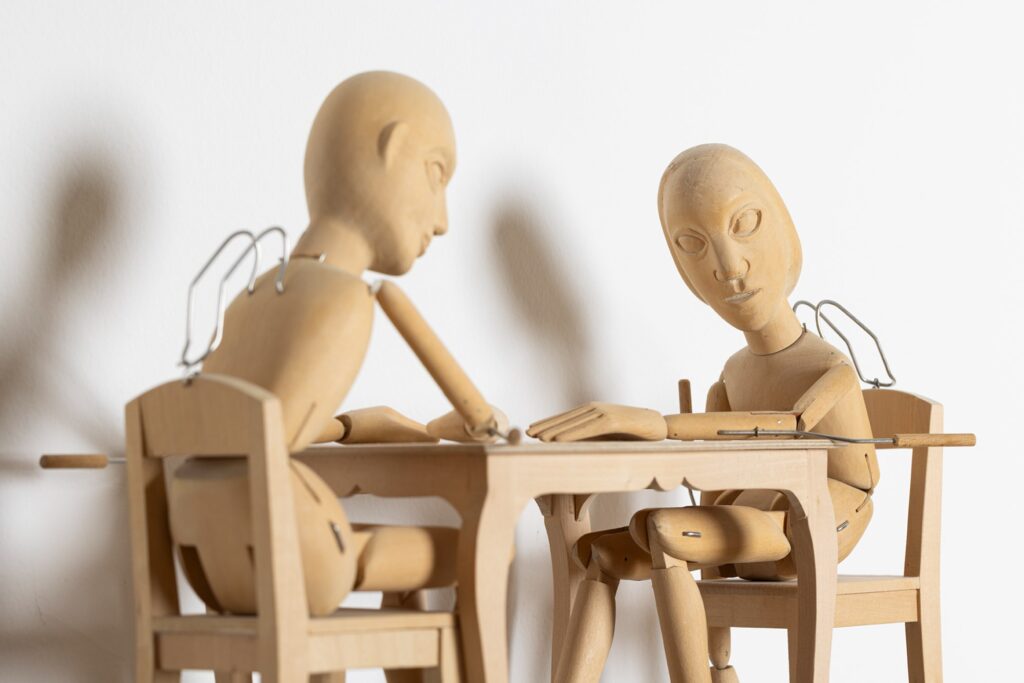
The 36th Ljubljana Biennale of Graphic Arts, Museum of Modern Art (MG+), Silvan Omerzu, Table for a Poet, 2025. Photo: Jaka Babnik. MGLC Archive.
Many of these artists have produced new works specifically for this edition. Their contributions explore contemporary urgencies, from ecology and identity to technology and folklore, through the speculative, the poetic, and the political.
A Curatorial Diary and a Book
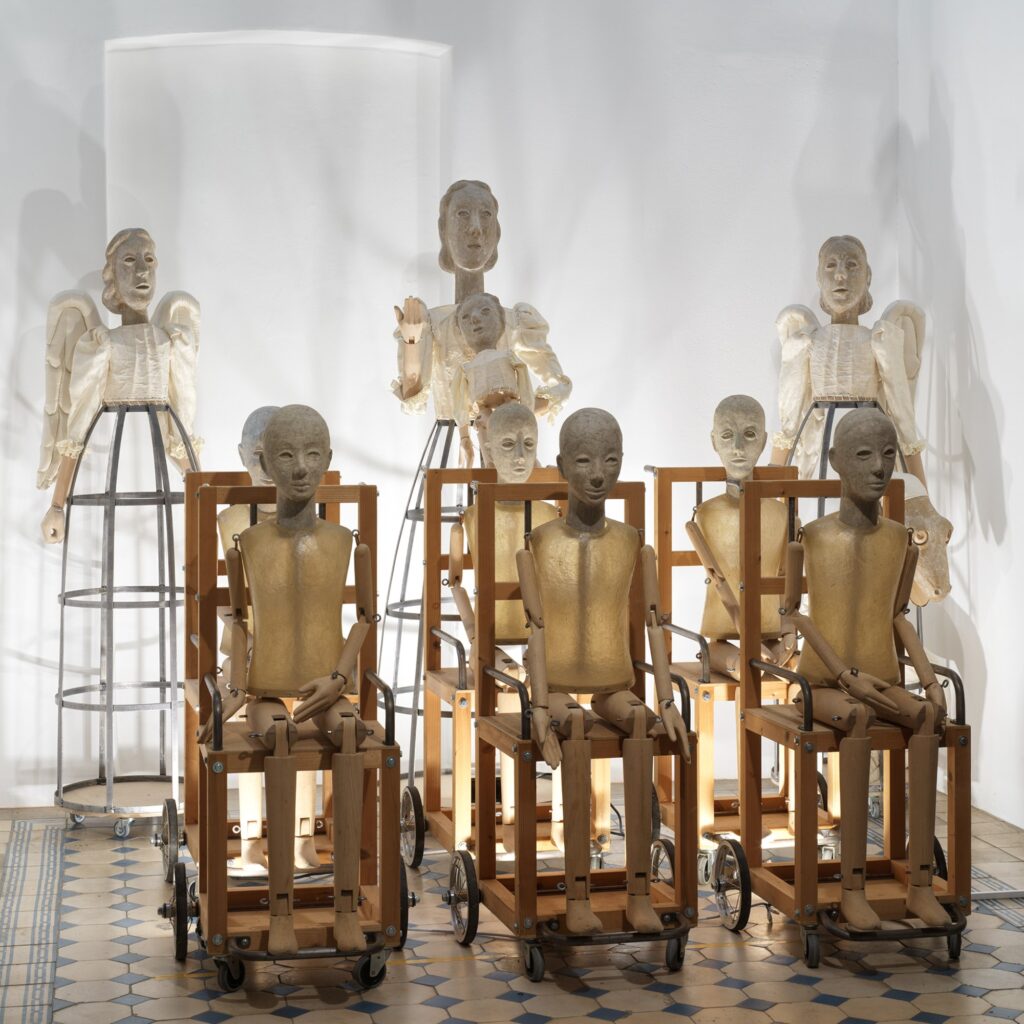
The 36th Ljubljana Biennale of Graphic Arts, MGLC Švicarija, Silvan Omerzu, The House of Our Lady, Help of Christians, 2025. Photo: Jaka Babnik. MGLC Archive.
To deepen public engagement, Martínez is publishing THE ORACLE: A Curatorial Diary from LJ, a weekly column on Mousse Magazine’s website and social media. Since late 2024, the diary offers readers a behind-the-scenes view of curating the Biennale: selecting artists, designing the public programme, and navigating the joys and challenges of working within Ljubljana’s unique cultural context.
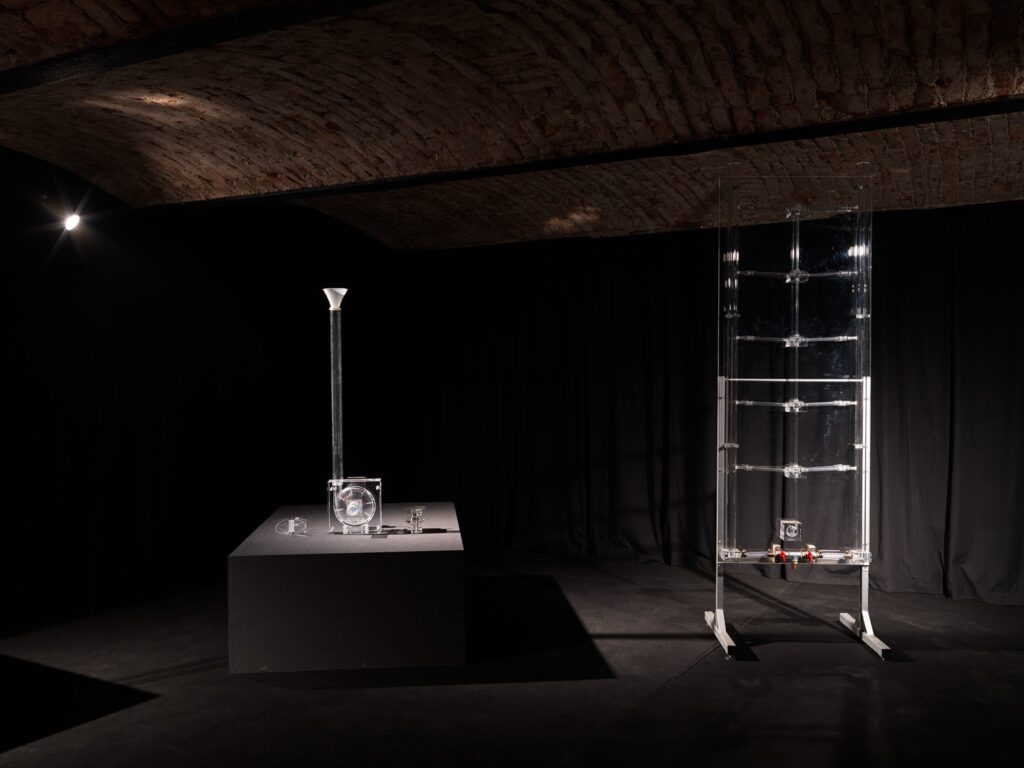
The 36th Ljubljana Biennale of Graphic Arts, MGLC Švicarija, Vesna Petrešin in collaboration with Prof Dr Eugen Petrešin, Autonomous Energy Machine, 2025. Photo: Jaka Babnik. MGLC Archive.
At a time when the world is marked by fragmentation, fear, and disillusionment, the Ljubljana Biennale offers an alternate path: one grounded in the power of art to imagine, to connect, and to regenerate.
As Martínez poignantly puts it, “A biennale constitutes an environmental practice. It forces us to look into a particular place and cultural context again and again.”
In 2025, Ljubljana becomes that place—and The Oracle, the mirror we hold up to our dreams for freedom, fantasy, and a more generous world.

